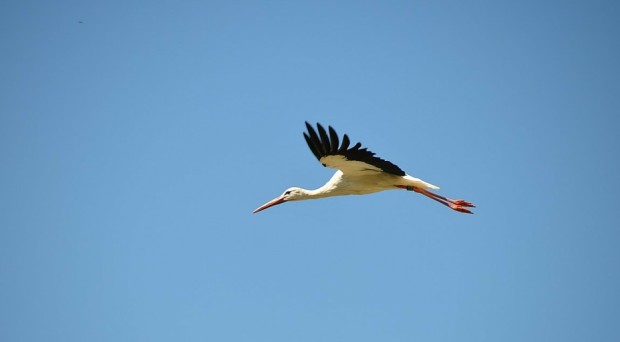
White storks are large birds that are most renowned in popular culture for two reasons: their ability to deliver babies (which has not yet been documented in scientific literature), and their long summer migratory flights.
Migration is an important part of these birds lives. In the warmer months, the storks spend their time in Europe, where they breed, and when Europe grows cold they head South.
It seems that the lifestyle of the stork is being drastically affected by human activity, in particular human waste.
However this annual journey down to Africa may not happen for much longer. Like so many of the Earth’s animal species, it seems that the lifestyle of the stork is being drastically affected by human activity, in particular human waste.
Research, published in the journal Movement Ecology, closely studied the movement and behavior of white storks (Ciconia ciconia). They found that migratory patterns were being impacted upon due to the availability of a relatively new, year-round source of food; landfill sites.
Sam Illingworth put it wonderfully in ‘These flying beasts are hooked on junk’ from his blog The Poetry of Science:
‘The white storks glide across the sky,
Migrating south in times gone by;
But now like Burroughs in his funk,
These flying beasts are hooked on junk’
It would seem that the majestic white birds share mans’ love of ‘junk food’. Rather than undergo the long flight south, storks are choosing to remain in Europe with this readily available source of food. So, why is this a bad thing?
For starters, as mentioned in the article, The European Union Landfill Directive aims to cover many of these, currently open, sites, which would make them inaccessible to birds.
This change in migratory behavior is having an effect on two ecosystems; Europe during the Summer and Africa in Winter.
But that’s not all. This change in migratory behavior is having an effect on two ecosystems; Europe during the Summer and Africa in Winter. I can’t even speculate what the effect might be in these areas, because we simply don’t know.
The human race’s influence upon nature is not restricted to storks. Another study discovered, to great surprise, that the chimpanzee (Pan troglodytes) population in the forest between the Budongo and Bugoma Forests was actually greater than expected. This was despite reported destruction of the habitats of the chimps.
Far from a happy ending however, the researchers speculate that this surprisingly large chimpanzee population would soon disappear ‘if protection is not afforded to them and habitat loss continues unabated’.
What’s clear is that anthropogenic changes (modifications in behavior related to the activity of humans) are having a significant impact on animal species, as well as entire ecosystems. We are certainly changing the world, but perhaps not for the better.
Daniel Caley
Latest posts by Daniel Caley (see all)
- The Big ‘Building Blocks of Biology’ Bamboozler - 9th October 2017
- Junk food-addicted storks, just another sobering example of humanity affecting ecosystems - 21st March 2016
Comments